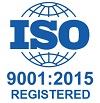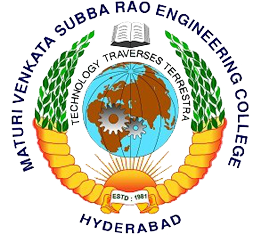ME 353
CAD/CAM
|
Instruction Duration of University Examination University Examination Sessional |
4 Periods per week 3 Hours 75 Marks 25 Marks |
UNIT-I
Design Processes: Design criteria, Alternative solutions, Alternative design, Computer Aided Design and Review.
Drafting Techniques: Basic geometric elements and their creation.
Geometric Modeling: Wire frame entities and their definition, Interpolation and Approximation curves. Concept of parametric and non-parametric representation of a circle and helix curves, properties of splines.
Synthetic Curves: Parametric representation of cubic spline, Bezier and B-spline curves, continuity, properties and characteristics. Concept of NURBS.
UNIT-II
Surface Modeling: Analytic surfaces: Definitions of planar, surface of revolution, Tabulated cylinder, synthetic surfaces: Cubic and Bezier surfaces.
Solid Modeling: C-rep and B-rep approaches
Design Applications: Mass property calculations, Mechanical tolerancing, Finite Element Analysis, Design Review.
2D Transformations and their Mathematics: Translation, Scaling and Rotation about arbitrary points, Shearing and Reflection, Homogeneous representations, concatenation.
UNIT-III
CAD Database and Data exchange: CAD Database and structure, IGES and PDES format.
Numerical Control Machine Tools: Features and elements of NC, Positional, paraxial and contouring types. Definitions of axes. Definitions of interpolation, post-processor, preparatory and miscellaneous functions, Canned cycles, Tool length and cutter radius compensation. Manual and computer aided part programming (APT) for simple components, programming with MACROS.
UNIT-IV
Computer Numerical Control: CNC, DNC and Adaptive control systems. Typical configurations and relative features. Machining centers, introduction to FANUC, SINUMERIC controllers.
Industrial Robots: Robot Anatomy, Configurations, Controls, Drivers, Programming methods and Applications.
UNIT-V
GT: Part families, layout, part classification and coding system. Opitz, MICLASS, CODE system.
CAPP: Variant and Generative process planning.
FMS&CJMS: Building blocks of Flexible Manufacturing systems and their control, Elements of CIMS.
Computer Aided Inspection and QC: Coordinate Measuring Machine, Non contact inspection: Machine vision, Scanning Laser Beam Devices, Quality control.
CAD/CAM Integration, Turnkey CAD/CAM Systems, Introduction to Rapid Prototyping Technique, Reverse Engineering.
Suggested Reading:
- 1.Arvid R. Eide, Roland D. Jenison, Lane H. Mashaw, Larry: / Mprtji[. “Introduction to Engineering Desingg’ McGraw Hill, 1998.
- 2.Ibrahim Zeid, CAD/CAM, Theory and Practice, McGraw Inc. New York, 1991.
- 3.Grover, MP and Zimmeers E.W. CAD/CAM, Prentice Hall of India, 1989.
- 4.Rao, P.N/ CAD/CAM: Principles and applications, 2nd Edition, Tata McGraw Hill, New Delhi, 2004.
- 5.Yoram Koren, Computer Control of Manufacturing Systems, McGraw Hill Int., New York, 1994.
- 6.Elanchezhian, C. Sunder Selwyn, T. Shanmuga Sunder, G. computer Aided Manufacturing, Laxmi Publications (P) Ltd., 2nd Edition, New Delhi, 2007.



